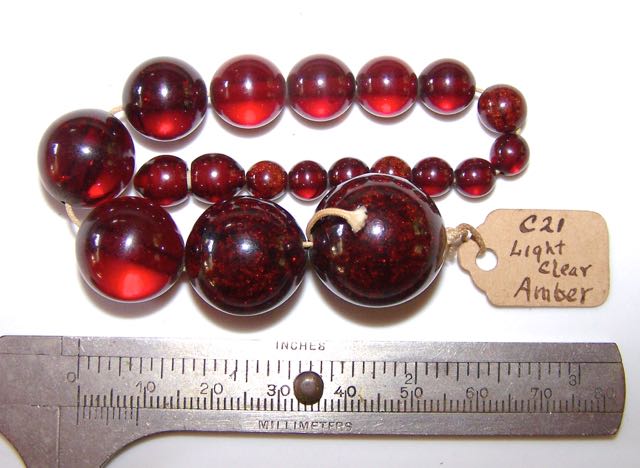| Bakelite was the trade name of cast phenolic resins (as well as the filled, molded types) | |||||
| Re: Re: "The Bakelite Co. made cast phenolic resin" -- Beadman | Post Reply | Edit | Forum | Where am I? | |
03/18/2020, 09:36:03
As a trade name, Bakelite was also used for casting resins, and later in the interwar period, for some thermoplastics.
I am still collecting documentation related to early plastic beads. Last October I visited 95-year old Mrs. Welch, whose father, Lawrence Byck, was the first chemist hired by Leo Baekland to work at the NJ laboratory and factory. Byck started a side business making beads and other items from Bakelite CAST resins. I am working on a publication to further document my visit (so I am scooping myself here!). Byck's beads may have been the first Bakelite beads made in the US, but since the Bakelite Co. also had factories in Europe, it's possible Bakelite beads were also being made there.
Due to time restraints I didn't get really good pictures of everything I wanted to, but I submit for your consideration a photo of a paperweight advertising Bakelite cast resin, and some of the beads in Mrs. Welch's collection of artifacts from her father. Note that the "light clear amber" beads have darkened with age. The paperweight was probably light amber originally, as well.
The second set of photos shows some of the pages from the sales brochure for Byck's jewelry business, Embed Art.


Modified by Rosanna at Wed, Mar 18, 2020, 12:05:34
All rights reserved by Bead Collector Network and its users
|